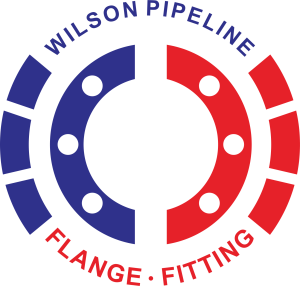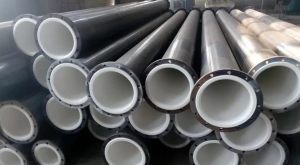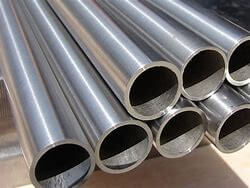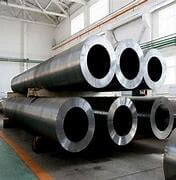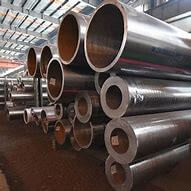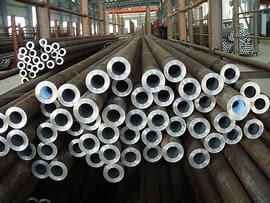Epoxy coal bitumen anti-corrosion pipe refers to the anti-corrosion process, the inner wall with 8710 coating, the exterior use of epoxy resin anti-corrosion coating. Can be useful to avoid or slow down the process of transportation and use of chemical or electrochemical reaction in the onset of corrosion of steel pipes.
According to China’s statistics, the annual domestic bend corrosion direct economic loss of more than 180 billion, when the global annual loss of up to $ 500 billion due to bend corrosion. Epoxy coal asphalt anti-corrosion bend can be useful to avoid or slow down corrosion to extend the service life of the bend, reduce the cost of bend operation. (1) seamless bend production process and technology can be divided into: hot rolling (kneading), cold rolling (drawing), hot expansion bend the fundamental categories. (2) bend in accordance with the production process and technology can be divided into: straight seam welded bend, spiral welded bend, plate and coil butt welding bend, bend hot expansion bend. Epoxy coal asphalt anti-corrosion pipe wall anti-corrosion paint for the joint technology type interpenetrating network polymer.
Initiate polymerization at room temperature. Epoxy coal asphalt anti-corrosion bend pipe appearance after pre-treatment qualified. Quickly coated with primer, primer requires uniform coating, no leakage, no bubbles, no clots, dry film thickness should not be less than 25μm. 100 ~ 150mm at each end of the bend is not coated with primer, to be primer table dry before curing coated with the first top coat.
Solid dry, curing before the second top coat, followed by coiled glass cloth. Glass cloth should be stretched tightly, the appearance should be flat, no wrinkles and bulging, crimping width of 20 ~ 25mm, cloth head lap length of 100 ~ 150mm. glass cloth coiled that is coated with the third top coat, the amount of paint required full, glass cloth all mesh should be filled with paint.
After the third top coat is dry, the fourth top coat is applied. Can also be used to dip the glass cloth full of paint for winding, instead of the second coat, glass cloth and the third coat to be actually dry, coated with the fourth coat. And immediately wrap the second layer of glass cloth, paint the fifth coat, or wrap the second layer of glass cloth soaked with paint. After it dries, apply the final top coat. The coated anti-corrosion layer, should be left to cure naturally.
Insulation bend production steps summary
(1) raw materials, namely, strip coil, welding wire, flux. In the input before are subject to severe physical and chemical testing.
(2) insulation bend pipe strip head and tail butt, the choice of single-wire or double-wire submerged arc welding, the choice of automatic submerged arc welding filler after the roll into a bend.
(3) before forming, strip steel after leveling, edge cutting, edge planing, surface packing transport and to bend edge processing.
(4) the use of electric contact pressure gauge control conveyor pressure at both ends of the press cylinder, to ensure the smooth delivery of the strip steel.
(5) The use of external control or internal control roll forming.
(6)Weld seam clearance control equipment is used to ensure that the weld seam clearance meets the welding requirements, and the pipe diameter, misalignment and weld seam clearance are severely controlled.
(7)Lincoln electric welding machine is used for single or double wire submerged arc welding for both internal and external welding, and then obtain stable welding quality.
(8) The finished welds are viewed by online continuous ultrasonic automatic flaw meter, which ensures 100% nondestructive testing coverage of straight welds. If there are defects. Automatic alarm and spray symbols, production workers according to this at any time to adjust the process parameters to eliminate defects in a timely manner.
(9) Select air plasma cutting machine to cut the bend into a single.
(10) cut into a single bend, each batch of bends are subject to severe first inspection system to check the mechanical properties of the weld, chemical composition, dissolution, surface quality of the bend and after non-destructive flaw detection inspection to ensure that the pipe making process qualified before officially put into production.
(11) weld with continuous acoustic flaw detection symbols on the part, after manual ultrasonic and X-ray review, such as defects, after repair, again after nondestructive testing until the confirmation of defects have been eliminated.
(12) strip weld butt weld and the location of the d-joint intersected with the straight weld pipe, all after X-ray television or film view.
(13) each bend through the hydrostatic test, the pressure is selected radial seal. Test pressure and moment are severely controlled by the bend water pressure microcomputer testing equipment. Test parameters are automatically printed and recorded.
(14) pipe end mechanical processing, so that the straightness of the end face, bevel angle and blunt edge to get accurate control.
